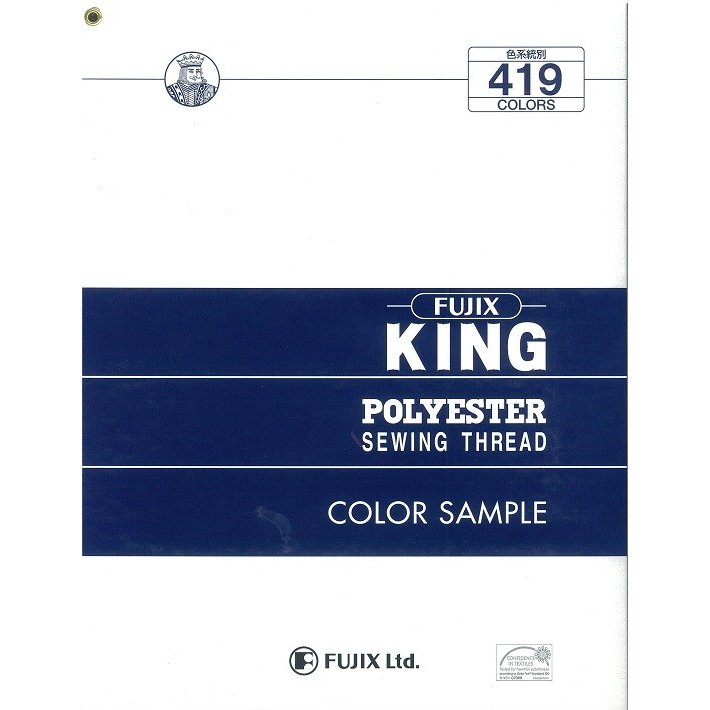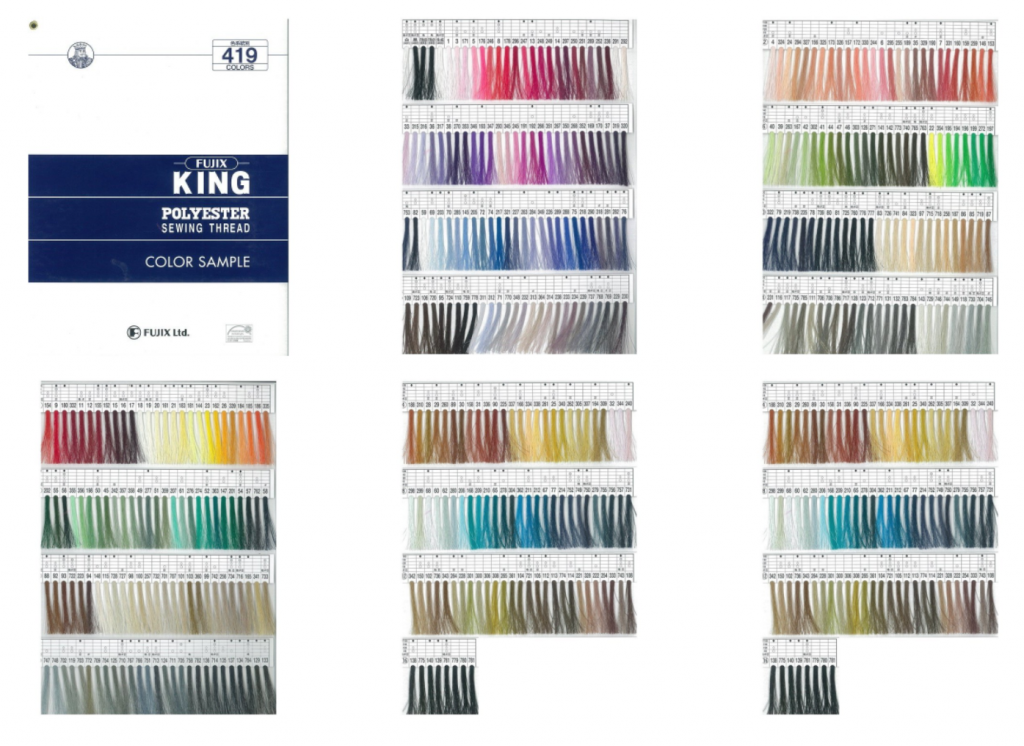Filament Yarn: Things you might not know
If you are familiar with Japanese trims and accessories, you must have heard of Fujix yarn before.
This time, we would like to introduce filament yarn from Fujix, King Polyester series.
Sewing threads are divided into two major types according to the type of fiber: Filament-long fiber yarn” and Spun-short fiber yarn.

Filament yarn
A long continuous fiber. For natural fibers, it is silk yarn.
For synthetic fibers, this type includes King Polyester, King Fit, Fine, King Star, etc., which are made of 100% polyester, as well as Resilon, Monocolor, etc., which are made of 100% nylon.
The raw material for this type of yarn is a single long fiber, which is very thin. To make it into sewing thread, several fibers are bundled together to make a suitable thickness and twisted to stabilize it (however, special fibers such as Monocolor are used). (However, single filament yarns are used for special items such as monocolored yarns.)
Filament yarn is characterized by its luster, beauty, smoothness and durability.
Short Fiber (Spun Yarn)
This type of synthetic fiber includes 100% polyester Kingspun, Schappe Spun, and HiSpun.
Spun yarns are short, cotton-like fibers. Cotton and hemp yarns are natural fibers.
The raw material for spun yarn is usually 38mm to 100mm in length, so to make sewing thread, several of these fibers are lined up and bundled together to make a long thread. This is called “spinning”. Two or three single yarns are then twisted together to make them the appropriate thickness and stabilize them.
Spun yarns are characterized by their fluffiness, soft texture, and good fabric fit.
Thickness of Sewing Thread
Generally, the finer the fiber, the better the quality. The finer the fiber, the better the quality of the sewing thread. Even when making thick sewing thread, it is better to combine many thin fibers to make thick sewing thread than to use thick fibers.
The thickness of a fiber can be expressed in terms of its cross-sectional diameter, but this is not accurate because the cross-section of a fiber is not perfectly circular. Therefore, the most common method is to express the thickness of a fiber by its fineness or number, which is measured by the ratio of its length and weight.
Number
The “No.” is used to distinguish yarns that are difficult to express in terms of yarn number and yarn count, or yarns of different thicknesses that must be expressed in terms of yarn number. The number indicates the number of threads in the lower twist yarn (how many threads are combined), and the larger the number, the thicker the yarn.
Fineness
CIL is the thickness of a fiber, and is generally used to mean “the thickness of a long fiber (filament).
The Tex is used as the unit of fineness. The value is obtained by measuring “how much the filament weighs for a certain length (constant length count)”. The larger the number, the thicker the yarn.
It is mainly used as a unit of filament yarn.
Color Catalog

Conclusion
Sewing threads come in various thicknesses.
Thicker sewing threads are used for thicker fabrics and thinner ones for thinner fabrics, but they are sometimes used for stitches and stitches regardless of the fabric thickness. In some cases, thicker sewing threads are used only for areas that require particular strength. Use different types depending on the application.
We hope this article can give you a better guide about sewing threads. For more thread variation, please check out our Sewing thread page.



